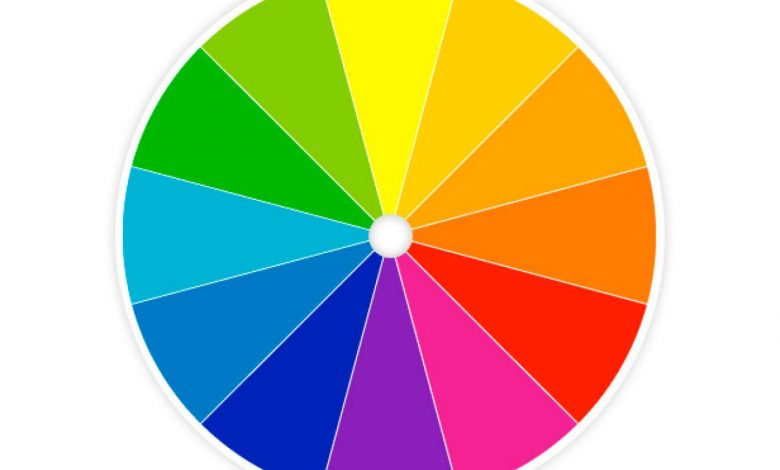RGB colors
How mixing red, green and blue can make almost any color

Pick a holiday. Now name the first three colors you associate with that holiday. If you are like most people, those who thought of Christmas were reminded of red and green, Hanukkah goers thought of white and blue, and Halloween enthusiasts came up with orange and purple. (Valentines = red/pink, St. Patty’s = green, etc. etc.)
There was a time when picking colors for your holiday decor was easy. Why? Society had already done it for you. With few exceptions, we covered our houses in layers of red, green, white, and sometimes blue lights before spending hours at our computer mixing and matching to create fantastical musical routines.
But now RGB (Red Green Blue) has taken center-stage. No longer are we restricted. Now we can put up one string of lights, one strip, one flood, and have over four million color options at our finger tips. Off the top of my head I can only think of a dozen colors, let alone four million!
While RGB is a fantastic technology, I have discovered in my endeavors, “with great color, comes great responsibility.” Colors have meaning and innate psychological effects on the human psyche. By discerning how color affects us, you, as a holiday decorators, can literally evoke any emotion you wish from your audience.
Before actually getting into programming, let’s talk a bit about some common colors:
Red is spicy. This color has actually been proven to physically increase blood pressure and breathing rates. It is a color that evokes strong emotions and is associated with both Cupid and the devil, love and war. While the context can influence how this color affects us, the color remains one of the most powerful there is. This is probably why the color is often associated with power; hence red-carpets, red-power ties, and red dresses.
Green is both the color of life and renewal, as well as envy and jealousy. However, when combined with red, you get Christmas. This color is very context heavy as it often plays off of other colors to achieve its mood. Historically, green is said to have calming/stress-relieving affects, which is why the waiting room for on-stage personalities is often called a “Green Room.” In a strange and twisted turn of events, green M & M’s are said to send sensual messages, due to the fact that the color has long been a symbol of fertility. I recently began experimenting with green lasers and found they lend themselves well to a synthetic “firefly” or “faerie” look.
Blue, while equally as emotional, does not share the limelight in the way red does. Various shades of blue can be found all over our daily lives, from seawater to the sky. Blue is a very tranquil color, often giving the feeling of calmness. However, this color is considered the least appetizing. What do I mean? Try this experiment: When having dinner tonight, take a serving of food and put it on a blue plate. Then take a serving of the same food and put it on a red plate. Ask your partner/di

nner guest to pick a plate. Because blue is often the sign for poison or spoiled food, chances are your dinner guest will choose the red plate. One warning about blue, too much blue can often lead to one feeling… well, blue. But the right shade and right touch of blue in a working environment (I personally love aqua) can actually make someone more productive.
Yellow is sunshine, and all the loveliness that comes with it. Think warmth, happiness, breezy days on the beach. Yet yellow can also represent sickness. When combined with orange, this color is very warm and inviting. However, too much yellow can turn people off.
Pink is a fun color to play with. Some sports teams will actually paint the guest locker room pink because it is said to have lethargic affects. While pink is merely a subset of red, it deserves a little recognition because it is often associated with a more romantic and charming emotion while red is focused on “fiery passion.” I personally like pink when combined with yellow as it reminds me of Easter and all the feelings associated with it.
Purple is regal in every sense of the word. Just look at the vibrancy of it! But seriously, for years purple has been the color of wealth and royalty. It is an exotic color because it does not appear in nature often. Purple adds a nice level of variety to nearly any color.
White is my favorite color. It represents purity, freshness, cleanliness. In Christmas decor, there is much debate between “cool white, pure white, and warm white.” Each has its own feeling, mostly because each is actually a shade of yellow or blue, or sometimes it is just “pure” white. White has a certain brilliance that cannot be ignored. There is majesty in white that I find stirs the core of humanity in a passionate yet calming and enthralling emotional journey. Considering white is the combination of all colors on the spectrum, perhaps I should not be as surprised.
Now let’s put these theories into practice:

The key to colors is finding combinations that remind you of other things. People have certain emotions attached to certain color combinations that you can tap into. Sometimes your theme or the music you have chosen will make this very easy.
When sequencing a musical number to RGB lights, it is always best to listen to the song multiple times to see what colors come to mind. For example, if you are programming the opening song from The Lion King, it would make sense to use yellow. Why? Yellow often symbolizes life, morning, happiness, joyfulness, etc. However, it can also symbolize danger and warning so don’t overdo it (though this is more closely associated to orange). In addition, Lion King already established this color to a world-audience with its opening scene of the sun rising (notice the morning tint on that entire opening scene?) and it would be an incredibly difficult task to retrain your audience’s brain during the time that they are viewing your display.
This is a side-note takeaway that is very important and will often make difficult color choices easy. Large corporations, society, brands, etc., have all established certain color combinations to mean “something” in specific scenarios. If you are following a well-established idea/theme (such as “The Cat and the Hat”), your audiences will appreciate your display more if you don’t make the Cat and the Hat’s signature hat blue and purple (when it is supposed to be red and white). The same can be said for the lyric in “Frosty the Snowman” that reads, “Heard him holler STOP!” What color are you going to flash? Red of course.
Having said that, you can establish a color-connection by constantly combining one musical feeling with one specific color or color-set. For example, when I programmed “Night Enchanted” by TSO (http://lightsmusicmagic.com/portfolio.html) I established green as a frightening color. Combined with red and yellow (typical fiery colors), I trained the audience’s brain to associate these three colors with the image of Hades I was trying to paint. Yet, red and green are the most festive and cheerful colors in the holiday season. You can train your audiences quickly; just don’t go against the grain too hard.
Listening to the lyrics of Night Enchanted, a section of the song speaks of “God saving us.” At this point I chose to bring in the color purple, both because it complimented green well and purple has been historically associated with royalty. It’s close enough on the color spectrum to blue to give the audience a more calming sensation but far enough to evoke total peace. I finally did close the musical number with a plethora of more peaceful colors, leading the audience out of their wild emotional journey to the underworld.
One of the most important tips I can give is to mimic nature to get the feel you want. Clouds are very “whimsical and full of fantasy,” thereby if you are looking for a whimsical and fantastic feeling, you might try white and pink with a dash of yellow.
Nature is very green and blue. Combine those two colors to acquire a peaceful and natural feeling. Add some yellow to give it more of a rustic or safari-like aura.
RGB also offers the unique ability to choose your backdrop color. In traditional lighting, the only background option is black. With RGB, sometimes I will wash an entire set of floods or pixels with one color (such as purple) and then do my specific programming with a complimentary color. You can see an example of this in my sample of “Firework” by Katy Perry (http://lightsmusicmagic.com/portfolio.html).
You have four million colors available to you, but you don’t need to use them all. While creating a flurry of colors may look cool for a few magical moments, audiences will appreciate the time you take to pick your colors in a very specific and intentional manner.
This article was included in the July 2012 issue of PlanetChristmas Magazine.
By Jeff Holmes




